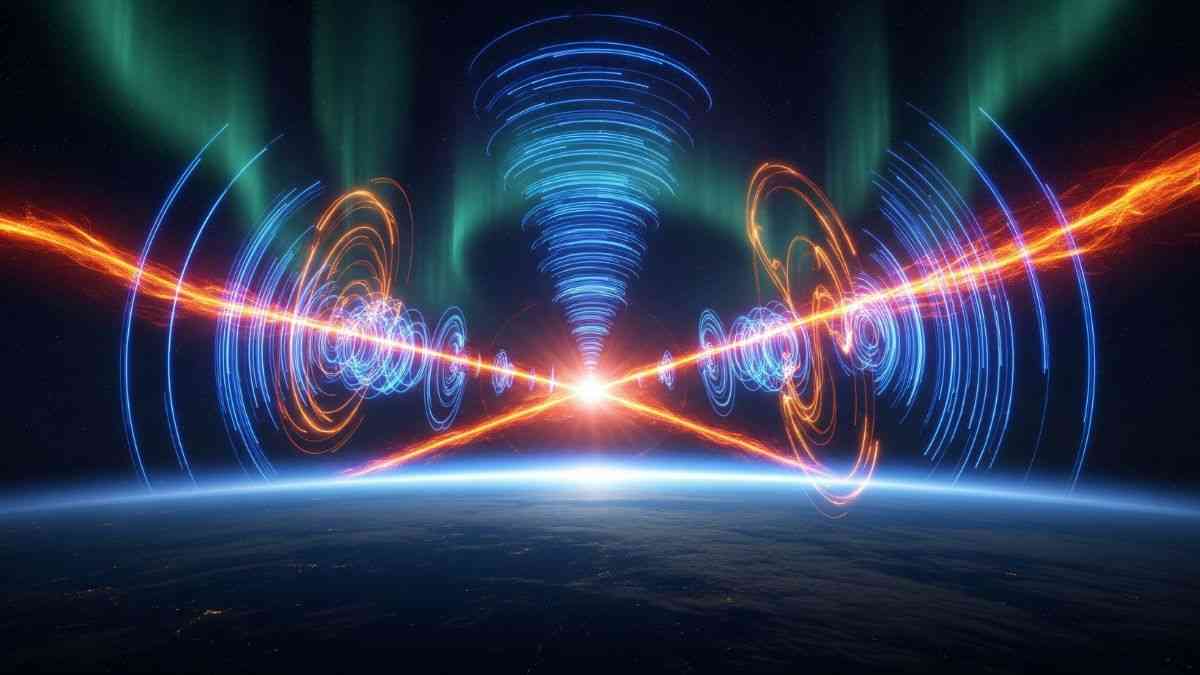Humanism
How Did Language Begin? The Great Mystery of Human Communication
25 December 2025

For years, they remained one of the greatest cosmic mysteries. Short, powerful radio bursts reached Earth from distant galaxies, with an energy that exceeded the total power our Sun will emit in its entire lifetime. Now, astronomers have finally figured out what's really behind these cosmic flashes—and the discovery offers a surprising answer.
In 2007, a team led by D.R. Lorimer recorded a strange signal from space. It lasted for only 5 milliseconds and came from outside our galaxy. But what truly captured the curiosity of astronomers was its power. While the signal was weak when it reached Earth, calculations showed that at its source, the radio emission must have released as much energy in a few milliseconds as the Sun emits in its entire lifetime. What were these mysterious flashes in the sky?
Similar signals have since been recorded many times, originating from various parts of the universe. Scientists have named them fast radio bursts (FRBs). The main problem with further research stemmed from the short duration of the waves. In just a few milliseconds, astronomers were unable to pinpoint the sources of these mysterious signals, especially since they were so far away. That was until recently.
The CHIME project (Canadian Hydrogen Intensity Mapping Experiment) came to the rescue. This giant telescope in Canada is equipped with instruments that allow for the precise determination of an FRB’s place of origin. In March 2025, CHIME detected a radio burst and led scientists directly to its source. What did they find there?
You might like to read: 60GB from Mars: NASA Probe Ready for Historic Mission to Europa
The burst recorded by CHIME was the brightest FRB ever noticed by humanity. Its source turned out to be a region about 45 light-years wide located in a galaxy 130 million light-years away from Earth. “The precision of this location, measuring in tens of milliarcseconds, is comparable to spotting a quarter from a distance of 100 kilometers,” commented Amanda Cook, quoted in a press release from McGill University. Cook was part of the team conducting the FRB observations as part of CHIME.
Thanks to the Canadian telescope’s precision, they managed to trace the March signal back to its source. “We got an exciting result—we spotted a faint infrared light source very close to where the radio burst occurred,“ said Peter Blanchard, a team member and research collaborator at the Harvard College Observatory at the Center for Astrophysics, in a statement. The object emitting the radiation was named NIR-1. It is most likely a red giant—a star in a late stage of development that has exhausted its hydrogen fuel. However, this is not the actual source of the mysterious radio bursts.
Red giants do not emit the amount of energy that would allow for a signal as powerful as an FRB. Researchers currently believe that there is another, much smaller and harder-to-detect object near NIR-1. This is a neutron star—a stellar core that remains in space after a star 10 times heavier than the Sun dies. Although neutron stars are smaller than red giants, their energy output is significantly greater, as is their gravitational pull. The neighbor’s gravity is slowly pulling fragments from NIR-1, and this process is likely responsible for sending out the exceptionally bright radio burst.
It is unknown whether other FRBs noticed by scientists have a similar source. Another theory regarding these bursts states that they are emitted by a new type of star—a magnetar. This is a type of quark star or neutron star with an exceptionally strong magnetic field. However, the existence of these objects has not yet been confirmed.
Read the original article: Tajemnicze sygnały z kosmosu. Wiemy, co kryje się za rozbłyskami

Truth & Goodness
24 December 2025


Zmień tryb na ciemny